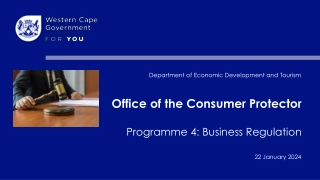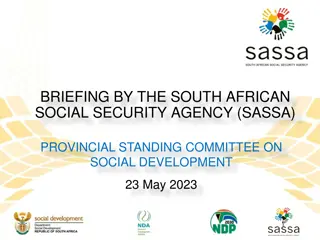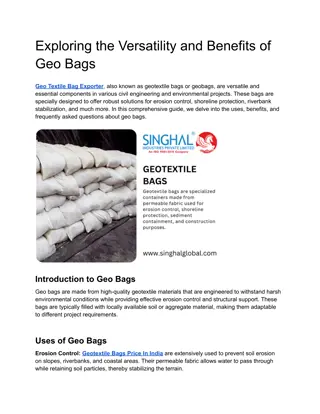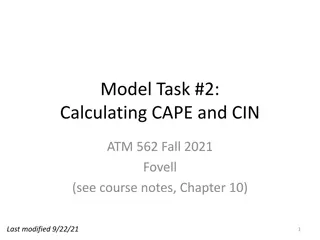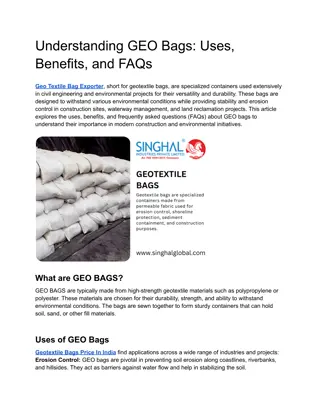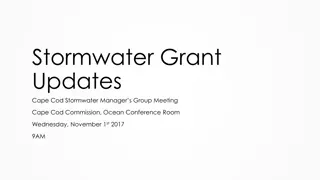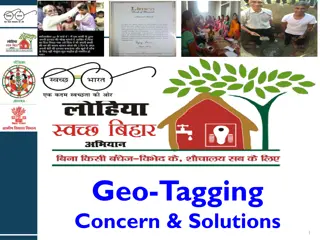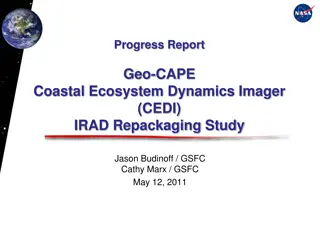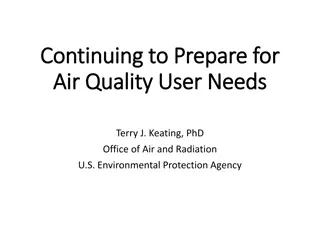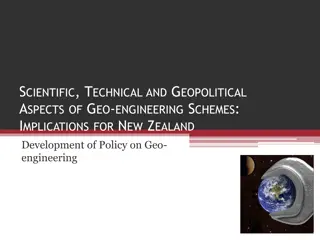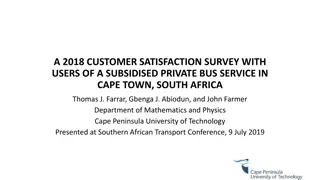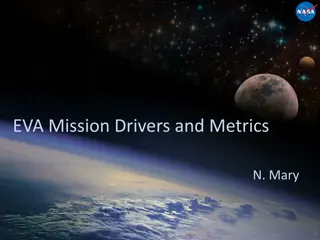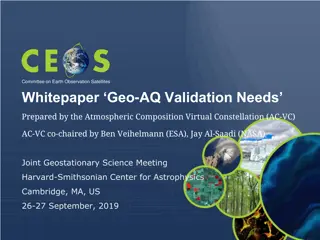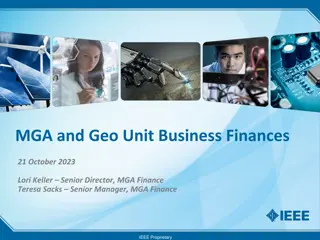Overview of GEO-CAPE Mission Implementation Analysis
The GEO-CAPE mission implementation analysis for FY 13 involved assessing instrument and mission risks, focusing on the impact of the TEMPO instrument on atmospheric science capabilities. Recommendations were made to update the instrument suite to align with evolving requirements. Risks were categorized into instrument development and operation areas, highlighting specific challenges such as lack of oversight, environmental testing issues, detector performance limitations, and data rate considerations. Strategies for mitigation and monitoring were identified to address critical issues and ensure mission success.
Download Presentation

Please find below an Image/Link to download the presentation.
The content on the website is provided AS IS for your information and personal use only. It may not be sold, licensed, or shared on other websites without obtaining consent from the author. Download presentation by click this link. If you encounter any issues during the download, it is possible that the publisher has removed the file from their server.
E N D
Presentation Transcript
GEO-CAPE Analysis of Mission Implementation Alternatives FY 13 Guidance Letter Task 8 May 7, 2013
Introduction 2012 was a year of great progress for GEO-CAPE Documented NASA state of practice / readiness to use Hosted Payload (HPL) model Completed mission risk analysis and made recommendations for Geo-Pathfinder HQ accepted recommendation that future GEO-CAPE formulation studies focus only on distributed HPL mission implementation The Earth Ventures Instrument program selected an instrument (TEMPO) that will do some GEO-CAPE atmospheric science ESD acknowledged the impact of TEMPO on GEO-CAPE mission planning: With the award of the Tropospheric Emissions: Monitoring of Pollution (TEMPO) instrument as the first Earth Venture Instrument (EVI-1), a partial change of direction will be needed for the GEO-CAPE activities, as the TEMPO instrument will likely achieve a significant portion of the GEO-CAPE measurement objectives. ESD guidance for FY13 GEO-CAPE Task - 8: Define instrument and measurement risks (and potential mitigation activities), including integration of science products across platforms and technology maturity. One of the 2013 GEO-CAPE activities will be a mission implementation study to update the GEO-CAPE atmospheric composition instrument suite in response to ESD guidance 2
2013 Instrument and Mission Risks Assessment Overview The study objectives are to Assess remaining GEO-CAPE capabilities based on TEMPO requirements and expected performance - The GEO-CAPE atmospheric composition instrument suite (ACIS) = TEMPO + GCIRS Update GEO-CAPE Atmospheric science capabilities and implementation architecture including schedule requirements Co-ordinate with TEMPO team and ASWG Work with SEWG/ESTO on technology needs / recommendations / further work The study needs to be completed by the end of March and results ready for ESD by early April The risks were divided into two categories: Instrument Development Instrument Operations 3
Summary of GEO-CAPE Instrument Risks As of 7 May 2013 5 L, C Trend ID Approach Title L I K E L I H O O D 2, 3 1 M Lack of I & T Oversight 4 3 3, 3 2 M Environmental Testing Issues 4 2, 3 6 3, 3 3 M Detector Performance Limitations 3, 2 4 M Multispectral Ozone Science Measurements 2 5 1 2, 2 5 M Science Data Rates 3, 4 6 M Pointing/Jitter Requirement 1 1 2 3 4 5 CONSEQUENCES Criticality Approach M Mitigate W Watch A Accept R Research L x C Trend Decreasing (Improving) Increasing (Worsening) Unchanged High Med Low
Summary of GEO-CAPE Operational Risks As of 7 May 2013 5 L, C Trend ID Approach Title L I K E L I H O O D 3, 3 8 M Contamination 4 3 3, 2 9 M Field-of-View Impingement 9, 8, 10 3, 3 10 M Calibration 2 2, 3 14 M Launch and/or Flight Thermal Affects 14, 15 2, 3 15 M Launch Loads 16 1 1, 3 16 M Operations 1 2 3 4 5 CONSEQUENCES Criticality Approach M Mitigate W Watch A Accept R Research L x C Trend Decreasing (Improving) Increasing (Worsening) Unchanged High Med Low


